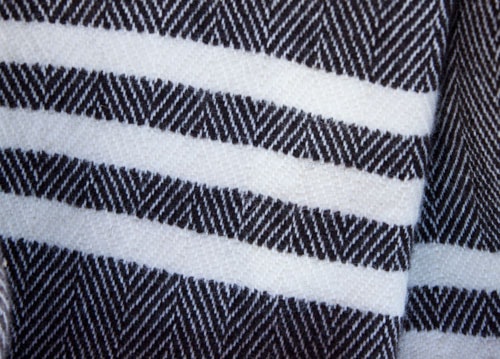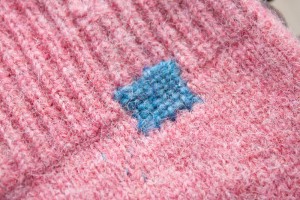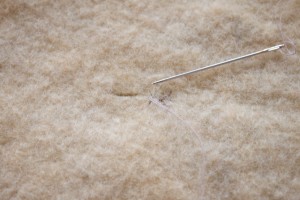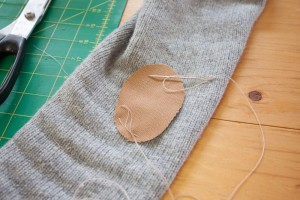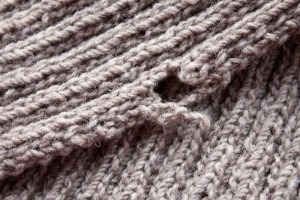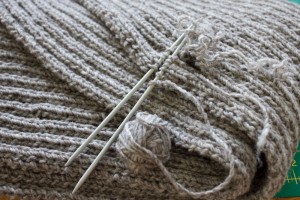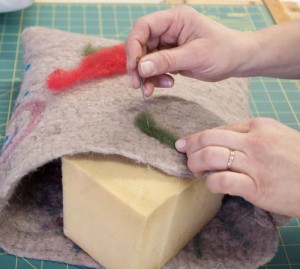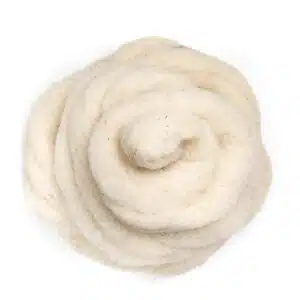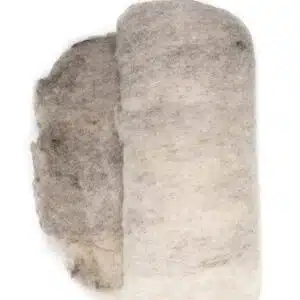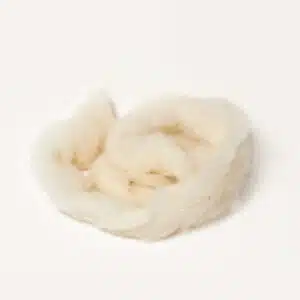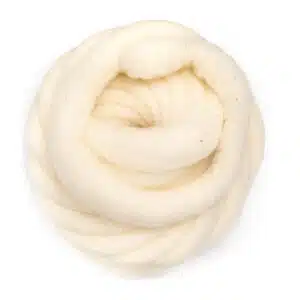In this blog series we are using the R's of Sustainability - rethink, refuse, reduce, reuse, repair, recycle, and rot - to help us examine wool as a sustainable textile choice. In parts 1 and 2, Rethink and Refuse, and Reduce and Reuse, we looked at wool from raw material to finished product; wool is readily renewable, requires minimal processing, is very versatile, and highly durable. These characteristics make wool a great choice when making new purchases because, if combined with quality craftsmanship, you will have invested in a low-impact and long-lasting product. However, even the best quality items can become out of fashion, worn out, or damaged, which brings us to part 3 of our series, Repair and Recycle. There are many different ways to repair, upcycle, and recycle woolen items, increasing their useful lifespan and keeping them out of the compost pile or landfill!
Repairing
Once standard practice in even the wealthiest of households, now, few folks know how to repair minor damage on a garment or blanket. We think that is a bad thing. With only a little instruction and minimal time, socks can be darned, blankets mended, elbows patched - sometimes to stylistic advantage - and money, resources, and embedded energy saved. Wool fabric can be woven, knit, felted, or boiled and so, when it comes to repair, the method depends on the type.
Woven repair for small holes in woven and knit fabrics:
Woven repair is a very simple and quick technique. All you need is a darning needle, a scrap of yarn, something to hold your repair item taut against, and about 10 minutes time. For this reason, not only is it the best repair method for woven fabric, it is the go-to method for darning knitted socks and inconspicuous holes in sweaters. You can match your repair yarn to your piece, or you can choose a contrasting colour to highlight loving repairs on well-used items!
Stitching for small holes in felted or boiled fabrics:
Felted and boiled fabrics are very sturdy fabrics (not at risk of unravelling like a woven or knit) that tend to be thicker, loftier, and a bit fuzzy. For this reason, small holes can often be stitched closed on the back side of the fabric without any noticeable evidence on the front side of the fabric.
Patching for large holes (especially on elbows and knees) in woven, boiled, or knit fabrics:
Everyone is familiar with elbow patches on jackets and sweaters - they are a common stylistic addition - what folks sometimes forget is that the patches started as a practical way of extending the lifetime of the garment. Patches can be of a different type of fabric (for example, woven canvas) or a matching fabric (for example, you can knit a patch and then adhere it to your garment).
Re-knitting for conspicuous sweater holes:
Creating a knit-in, or re-knit, repair is the best way to fix a knitted item where the hole is either; a) quite large, or b) over colour-work or patterning that would be lost with a woven repair. This repair method can seem a bit daunting, but is totally manageable for an intermediate or expert knitter.
Needle felting for holes in felted and boiled fabrics:
With felt or boiled wool, you can also needle felt on a patch. This can be a bit tricky the first time you try it, but if you have a stash of wool roving, it is a great skill to have!
The internet if full of tutorials for repairing wool garments; a great one for doing repairs on knitted items is by knitter and instructor, Beth Brown-Reinsel, (author of Knitting Ganseys) - check her tutorial out here.
Up-cycling
Wool can easily be felted - this is both one of its best and its most annoying features, but when it comes to up-cycling, felting is great! An old wool sweater or blanket can easily be shrunken down into a new piece of felted fabric to be used in a seemingly limitless number of DIY projects. A simple google search for DIY old wool sweater projects will give you TONS of options, but a few of our favourites are: mittens, slippers, pillows, and pot holders. Not to mention, shrunken wool fabric can also be used to make patches on the elbows and knees of other garments (see above repair notes).
Recycling
Wool is extremely durable - this means that the individual fibres can often outlive the larger piece they are a part of, which brings us to recycling. On the opposite end of felting, wool items can easily be broken back down into individual fibres and reprocessed. At the mill, we do this all the time when we reprocess old wool comforters. In the larger textile industry, there are entire mills dedicated to recycling wool into new products like blankets, carpets, outerwear, and stuffing. In fact textiles in general are easily recycled into many useful products meaning you should almost never send your old textiles to the landfill (whether they are wool or otherwise). Check out this CBC article on textile recycling in Canada.
With repairing, up-cycling, and recycling, a wool item can have decades of function and use. However, as with all things, there can come a time when it is simply non-usable and needs to be disposed of. Fortunately wool is 100% biodegradable which means it can be composted rather than sent to the landfill. We'll explore the wonderful world of wool compost in our next sustainable textiles entry, Part 4: Rot.


